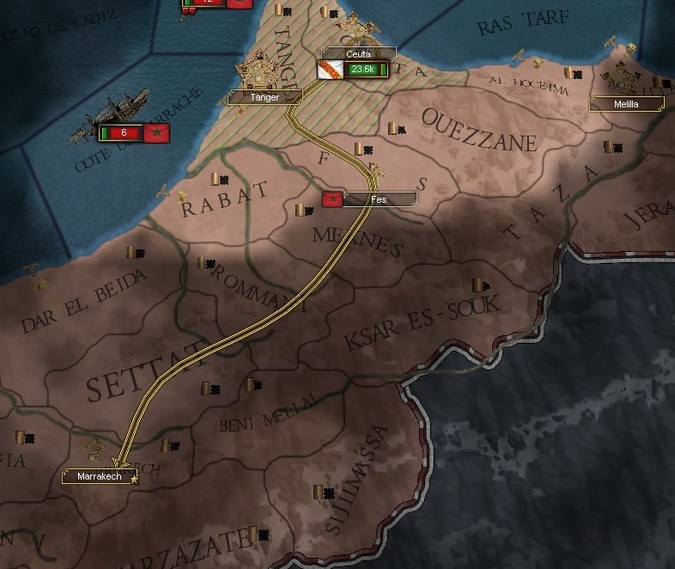Part 71: The Battle for the Straits
Chapter 7 - The Battle for the Straits - June 1828 to March 1831The wars raging between the domineering Almoravid and Tirruni Empires were fought on a scale unprecedented in Europe, with the two fierce rivals clashing in countless battles throughout the Mediterranean for over a decade. Far-reaching and ruinous, this contest between giants would be heavily scrutinised by historians in later years, with some grouping it all into a single constant conflict, others dividing it into distinct coalition wars, and others still penning it down as simply the latest battle in the long struggle between absolutism and revolution.
Whatever the case, one thing universally agreed-upon is that the conflict entered an entirely new phase in the summer of 1828, when the Majlisi Guard of al-Andalus launched its invasion of Morocco.

Morocco - the privileged heartland of the Almoravid Empire - had not been threatened even once throughout the entire war, largely thanks to the impressive Almoravid Navy. The ambitious naval project launched by the Grand Vizier of al-Andalus, however, broke this stalemate and allowed him to seize control of the Straits for just a few hours, time enough to send an army into Africa.
The Majlisi Guarded landed on the beaches of Rabat early in June, and immediately began marching northward towards Tangier, which would have to be secured before their supplies were tapped dry. At the same time, the Majlisi Fleet managed to score a series of minor victories in the Gulf of Qadis, forcing the Almoravids to devote greater resources to the battle for the straits - a battle that would be decided on both land and sea.


Grand Vizier Zulfiqar, who was still gradually recovery from his stroke, began taking on greater responsibilities in the capital. Despite his anger at not being notified of the naval invasion, he had to admit that it was well-timed and decisive, and so he agreed to begin further expansions of the Qadisi harbour. If the Andalusi were going up against the full might of the Almoravid Navy, then they would need a lot more ships.

The focus would still be on the army, however, the entirety of which was now across the straits and under the firm command of Sheikh al-Farihi.
Preparing for the inevitable battles with Berber forces, the commander began restructuring the army even before reaching Tangier, moving his highly-disciplined elite soldiers to the flanks with the artillery, and filling up the centre with the more inexperienced troops and obsolete gunnery instead.

Sheikh al-Farihi wanted nothing more than an opportunity to prove himself on the battlefield, and now that he was deep in Almoravid territory, he would be given exactly that. Throughout the march on Tangier, his supply lines were constantly being harassed by local tribesmen and militia forces, though they were easily crushed whenever they drew too close.

With these annoyances quickly squashed, al-Farihi was able to quicken the pace northward, and the fortress of Tangier came into sight before much longer. Despite being small and relatively unremarkable, the Andalusi had long coveted Tangier, with its commanding position effectively granting it control over the straits.
With its reinforced walls and expansive dockyards, however, it would prove no easy task to capture.

To the north meanwhile, al-Andalus was left bare and undefended, with all its hopes and ambitions pinned on al-Farihi and his expedition. For the Grand Vizier, however, that would not do.
The manpower reserves of Iberia had slowly been recovering in recent years, so once enough he had enough money stockpiled, Zulfiqar gave the order to begin raising a new army.

And within half a year, new infantry brigades began sprouting up all across Andalusia, with green troops also being drawn from the densely-populated Portuguese cities of northwestern Iberia. The newly-raised brigades rallied at Qurtubah, where they were given arms and uniforms, ready to begin their actual training.



In the eastern Mediterranean, meanwhile, the Vakhtani Caliphate continued its steady decline whilst being pushed back on two fronts. The Egyptians had managed to score several decisive victories at Aleppo, laying siege to the city whilst another army marched into Cilicia, where the Caliph’s forces were dealt another crushing defeat.

Whilst his commanders were planning their invasion of Anatolia, however, King Apanoub XIII was meeting with Tirruni’s emissaries in Alexandria. And towards the end of 1828, their discussions bore fruit with a sudden announcement in Alexandria, where the king declared that Egypt would re-join the coalition against the Almoravids.

The Berbers must’ve had informants within Alexandria, however, because they were ready for the announcement. Even before the news had reached Marrakesh, the coast of the Levant was swarming with Berber ships, with almost 20000 soldiers landing a scant few miles from Acre.
The Egyptian invasion of Anatolia was quickly called off, and the army began a forced march southward, where the Berbers were waiting to meet them.
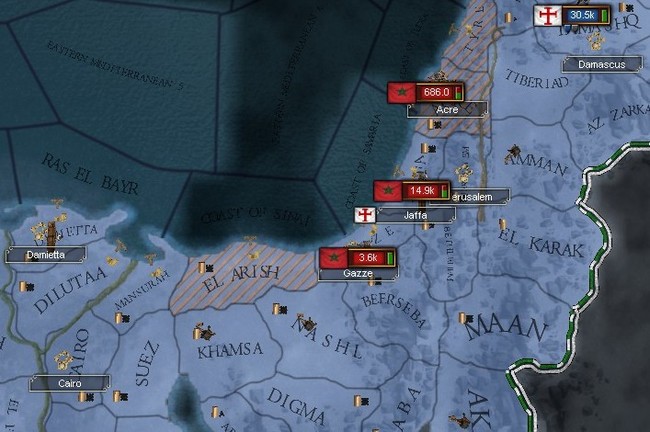
At the same time, Moroccan diplomats managed to convince the Jizrunid Emir of Palermo to enter the fray once more, throwing in his lot with the Berbers in return for the promise of central Italy.

Emir Ibrahim-Yah thus sent the entirety of his army, 17000-strong and led by his eldest son, marching into Tirruni territory early in 1829. After easily defeating a small garrison force, they laid siege to Napoli, hoping to capture the fortress and secure the roads into the so-called ‘Roman Kingdom’.
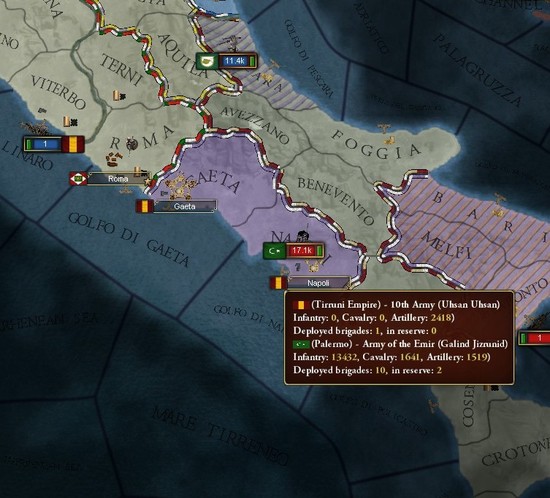
Tirruni could not spare a single man just then, however, and was forced to leave Napoli to its fate. The Emperor had faced great difficulties in repelling the German invasion of Italy, but after suffering tens of thousands of casualties in the Alps, he finally managed to secure some headway into Bavaria.

A sudden German offensive in March, however, had undone everything he’d achieved in the past six months. Led by Hanoverian troops, coalition forces not only managed to retake all of Bavaria, but also push into Italy and besiege Milan and Parma, crushing Tirruni’s army as they did so.
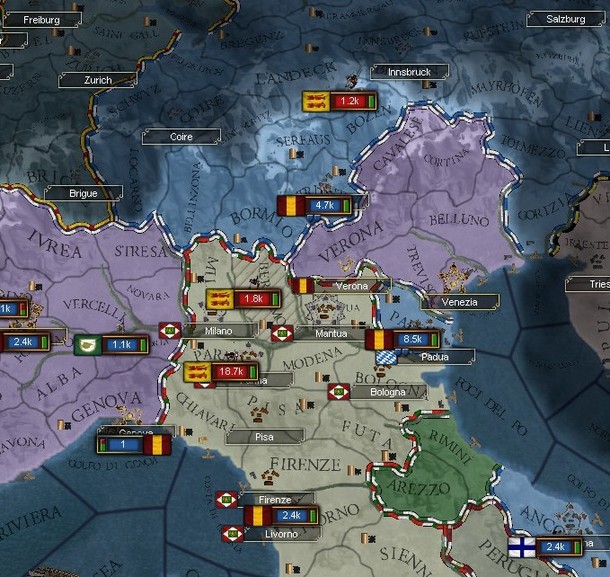
With the battle for Italy becoming desperate, Tirruni announced that subsidies to all of his allies would have to be cut yet again, freeing up some income to build up new armies in Occitania. As the largest province in his empire, however, Occitania had already supplied the vast majority of his troops, and was now beginning to suffer under the burden.
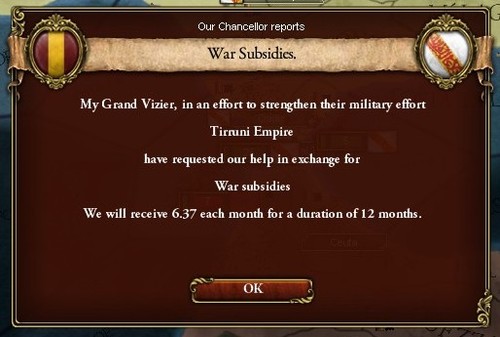
In eastern Europe, on the other hand, the War for Russian Leadership was looking like it could only end in one way. After suffering a string of humiliating defeats, Tsar Vasiliy VII was forced to abandon his eastern territories altogether, forming a strong defensive barrier around Novgorod instead.
Smolenskian armies managed to capture vast tracts of Russia over the next few weeks, and once these new territories were secured, an offensive for Novgorod was launched. Once the historic city fell, they were certain that the war would finally end, and Russia would have her victor.
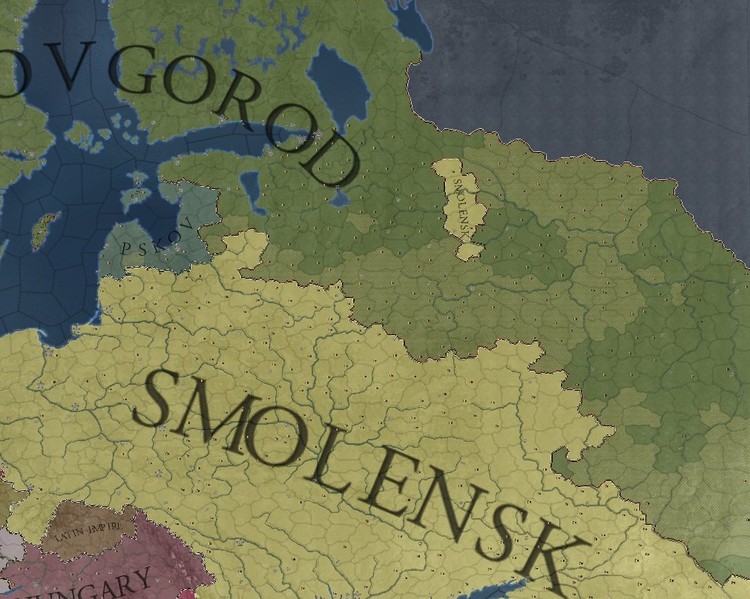
Shifting back to the wars in the west, however, the siege of Tangier had stretched on for a good few months without interference. The Grand Vizier found this very suspicious, constantly worrying over what the Almoravids might be planning, but Sheikh al-Farihi saw it as the perfect opportunity to capture Tangier and secure his supply lines before engaging the Berbers at all.
The city was well-fortified, however, and six months crept past without any progress. Any breaches were quickly repaired, attempted assaults were easily repelled, and the land blockade was made futile by Moroccan shipping into its harbours. And to make matters worse, August of 1829 brought bad news with it, with scouts informing al-Farihi of a large army gathering at Fes.
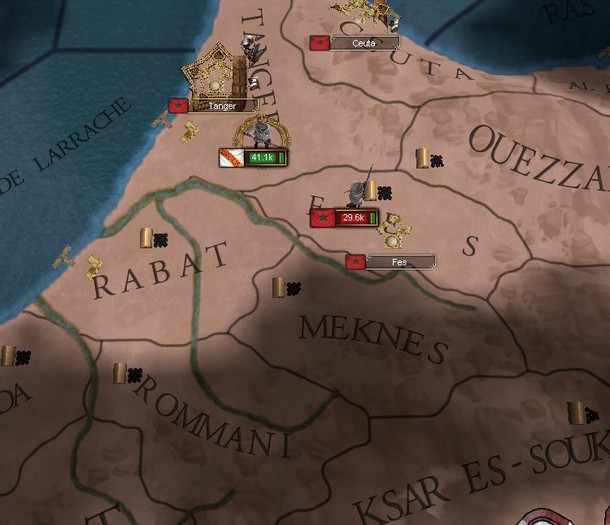
The dreaded engagement finally arrived early in September, when a 30000-strong Moroccan army suddenly attacked Andalusi positions around Tangier. The Andalusi had numerical superiority, but the enemy were able to better utilise the terrain, and the matter was further confounded when the Tangier garrison launched a devastating sortie.
Low in morale and fighting on two fronts, the battle of Tangier was never going to end well.
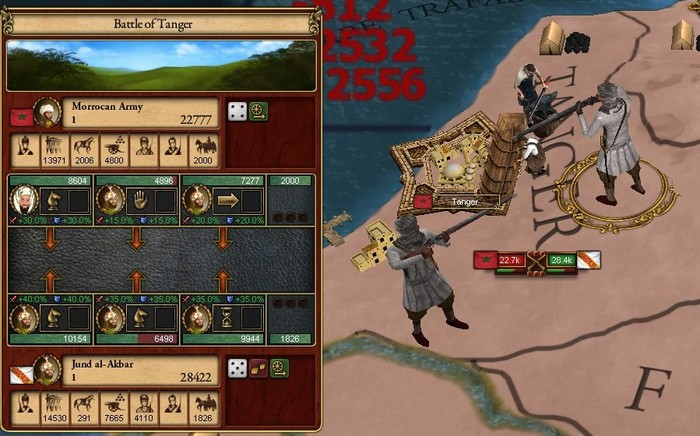
After three hours of heavy fighting, the Majlisi Guard was forced to retreat, abandoning their siege and fleeing southward. The Berbers had suffered 13000 losses, but they had dealt 20000 casualties and lifted the siege of Tangier, so the battle was undoubtedly a victory for them.
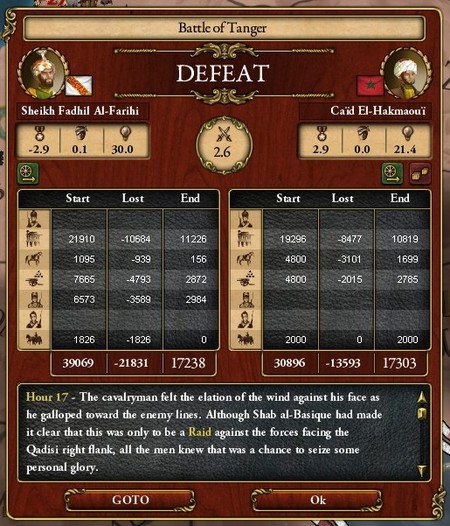
And amongst the 20000 Andalusi deaths, unfortunately, two battlefield marshals had also met their ends. Shab al-Basique and Hayatalriz al-Siriyi, both high-ranking and influential commanders under Sheikh al-Farihi, had been shot from their saddles in the heat of the battle and lost to the sands, with the Berbers rebuffing any attempts to recover their bodies.
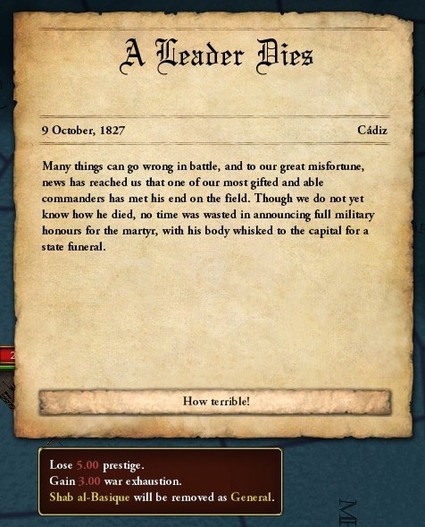

The Majlisi Guard, though defeated, was not destroyed. Still numbering a respectable 20000 professional soldiers, the Guard regrouped at Dar el-Beida, an inhospitable stretch of desert just north of Safi, where the Berbers were content to let them succumb to attrition.
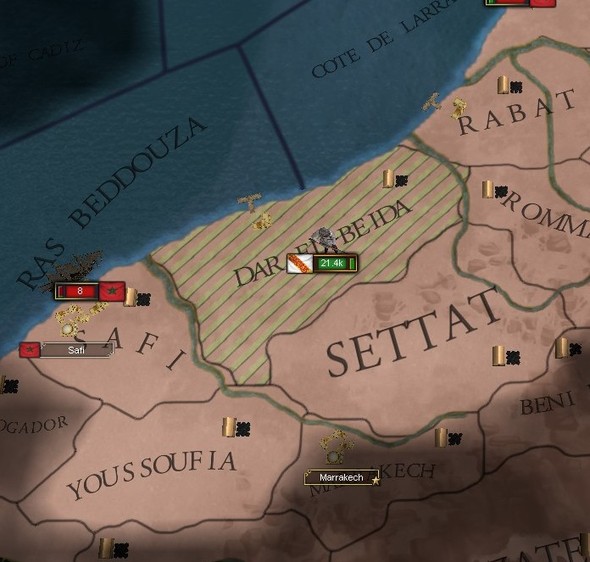
It didn’t take long for news of the disastrous battle of Tangier to reach Qadis, and when it did, the Majlisi nobles immediately began preparations to reinforce the Majlisi Guard. They refused to abandon the invasion of Africa, and the straits of Gibraltar were guarded by just 10 warships, which the Majlisi Fleet could easily overwhelm.

Any notions of dispatching a new army to Morocco, however, were abandoned within the week. And not just because the Majlis was reactionary in decision and half-hearted in action, but because more news had arrived, far worse than the defeat at Tangier.
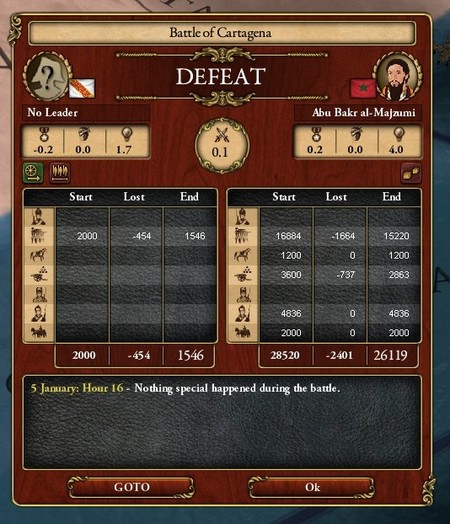
Another invasion of Iberia had been launched, with 30,000 Berbers suddenly assaulting Qartayannat, overwhelming the Andalusi garrison and capturing the fortress within hours. And it didn’t end there, with the enemy mimicking their last invasion by pushing northwards and capturing Balansiyyah, another predominantly-Andalusi city.
This was likely what the Moroccans had spent the past year planning, and it was already looking to be decisive and one-sided.
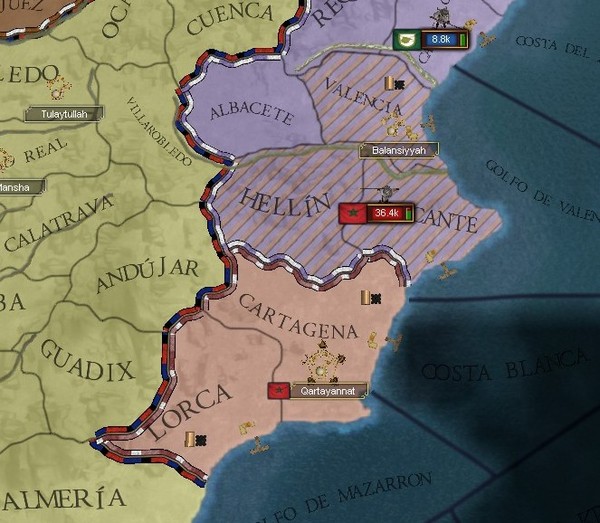
The Almoravid Navy then landed another 20,000 soldiers at Balansiyyah, which quickly reinforced the existing army, with the larger combined army then engaging and defeating a small Tirruni force just south of Tarrakunah.
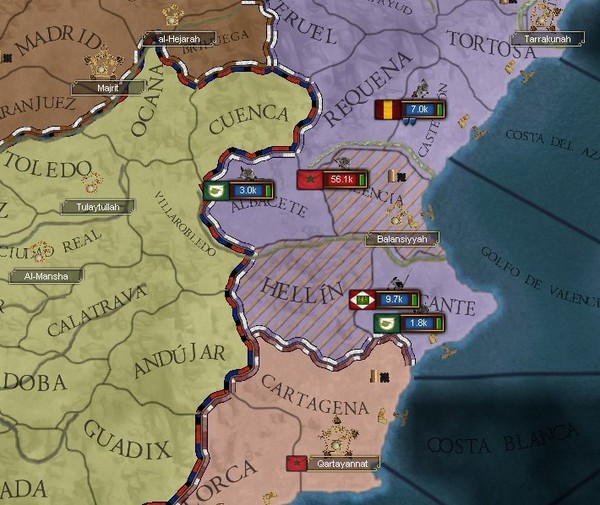
That was as far as the Berbers pushed into Qattalun, however, before turning around and marching south again. Within days, their plans became clear to the Andalusi, who scrambled to prepare a defense as they launched an invasion of al-Andalus.
Tulaytullah and al-Mansha, already weakened by recent sieges, both fell in quick succession, though they were fortunately spared a sacking. The Berbers simply installed a small garrison before leaving any captured cities, focusing their efforts on assaulting the next fortress, determined to reach the gates of Qadis before year’s end.
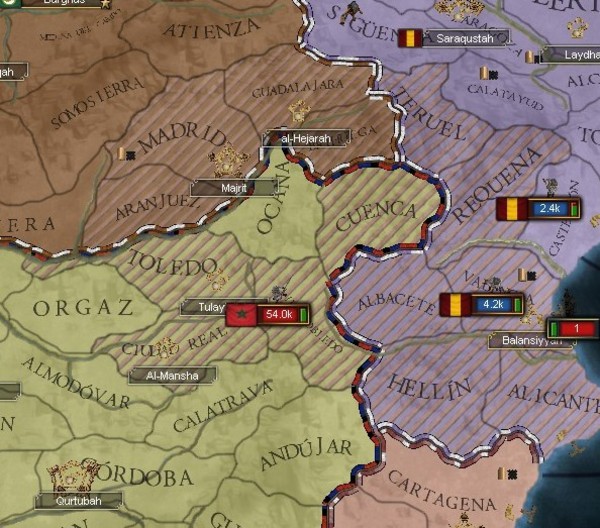
Fortunately, however, Grand Vizier Zulfiqar had been preparing for exactly that. He’d spent the past few months training his small army, gradually reinforcing its ranks with new troops whenever the manpower became available, and at the same time constructing and commissioning new artillery pieces.
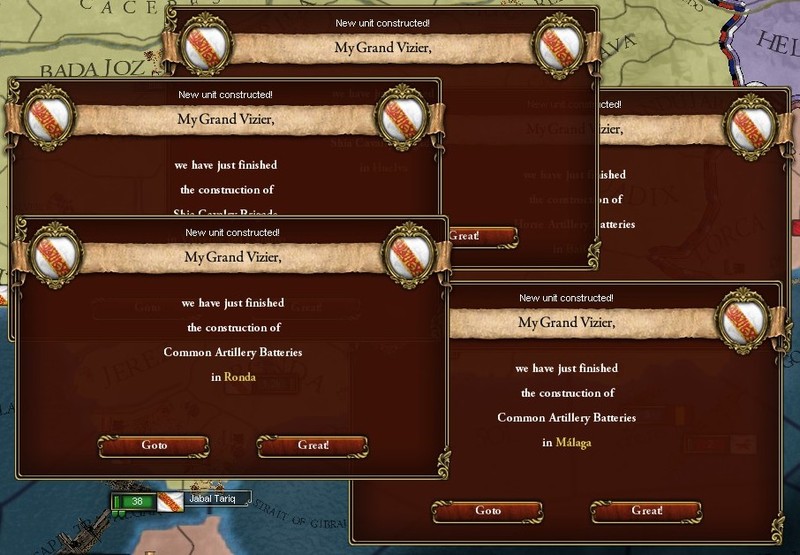
And by December of 1829, his small army had swollen to over 20000 soldiers - all green and inexperienced, but eager to fight for the fatherland.
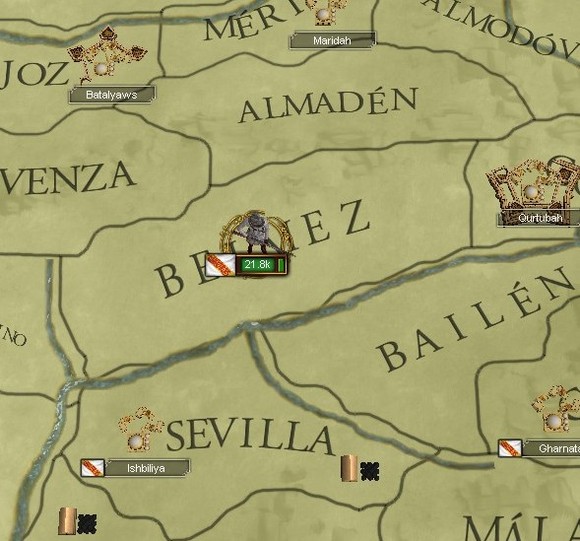
Even better, by the end of the year Zulfiqar’s doctors confirmed that he was well enough to leave his sickbed, though many in the Majlis still had their doubts. Raed was very frail in body and mind, but he was determined to lead the defense of al-Andalus, immediately leaving the capital to take command of his army.
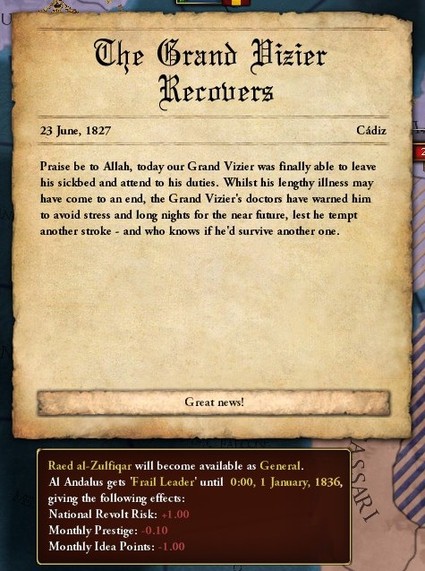
As the Andalusi and Moroccans prepared to clash once more, however, the war raging in Britain had just come to an end. After decisively crushing the Irish army at the battle of Manchester, the French proceeded to secure the rest of England and Wales, forcing High King Fáelbe to formally abandon his claims to the south.

Celebrations immediately broke out in Paris, where the young Queen Julianna played host to a wide array of envoys and dignitaries, all of whom witnessed her being crowned the Queen of England. The lavish investiture was spoiled by Tirruni’s delegate, however, when he refused to recognise Julianna’s claims over England, not until she received express permission from Emperor Tirruni himself.
The diplomat was immediately expelled from Paris, of course, with relations between France and the Tirruni Empire souring considerably over the incident.
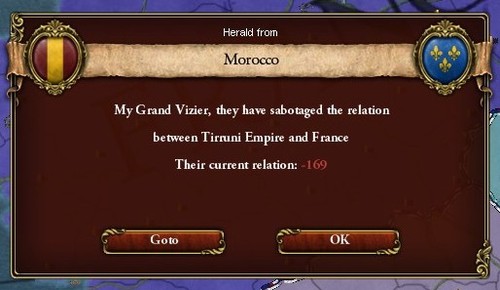
The French would not be drawn into another war, however, not so soon after fighting both Hannover and the Celtic Empire. Instead, they focused on advancement in culture, with Queen Julianna erecting an expensive triumphal arc commemorating her victory over the Celts.
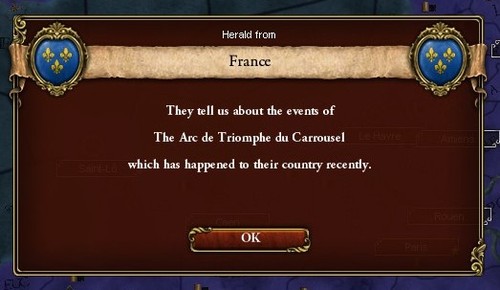

In Russia, meanwhile, the war raging between Novgorod and Smolensk continued down the same road. The Novgorodians found it impossible to counter the revolutionary tactics and modern artillery that Smolenskian generals brought to the battlefield, and before long, they’d lost the entirety of their Russian territories to the enemy, save for the well-fortified city of Novgorod itself.
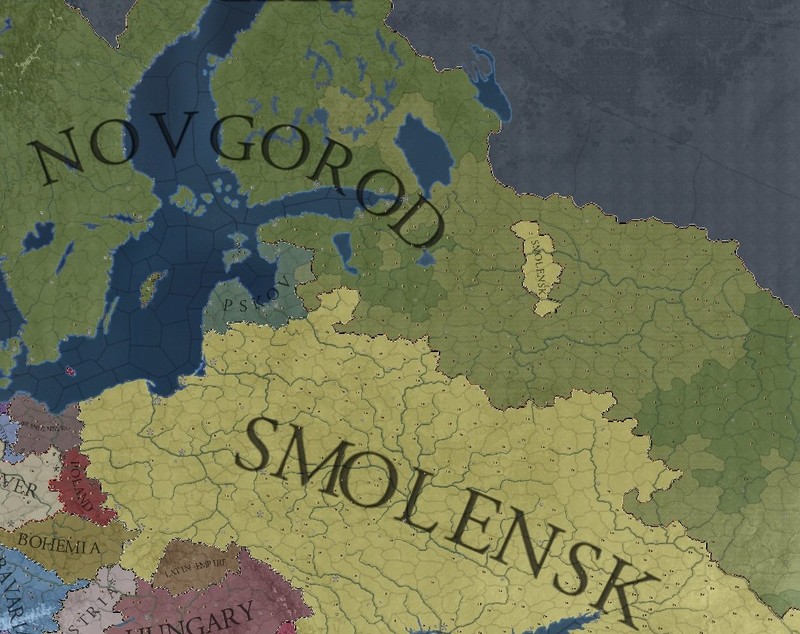
Suffering embarrassing defeat after defeat, the situation was quickly becoming desperate, and Tsar Vasiliy was forced to impose forced conscription on his Scandinavian possessions even as Smolenskian armies marched on his capital. Novgorod was surrounded before long, and with the city subjected to constant bombardment day and night, it was looking like the War for Russian Leadership would be over within the year.

Back in the Mediterranean war, meanwhile, the Almoravid Sultan scored another victory by convincing the Hungarians to join the war again. The Hanoverian army was already gaining traction in Italy, and with the combined German-Hungarian forces preparing a joint invasion, Sultan Yahya was convinced that Tirruni’s dominance over the peninsula was about to be shattered.
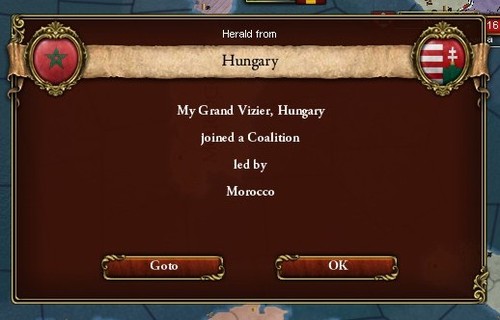
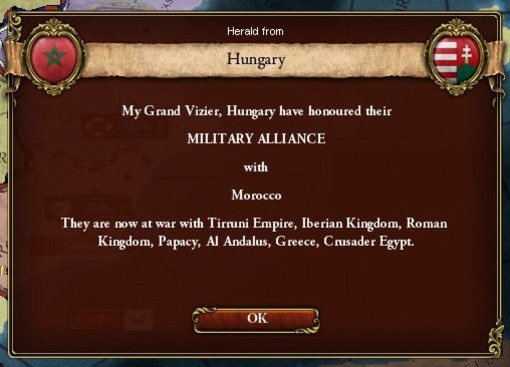
In response to this, Tirruni slashed subsidies once again, with al-Andalus now receiving almost nothing to help counteract the Almoravid invasion.
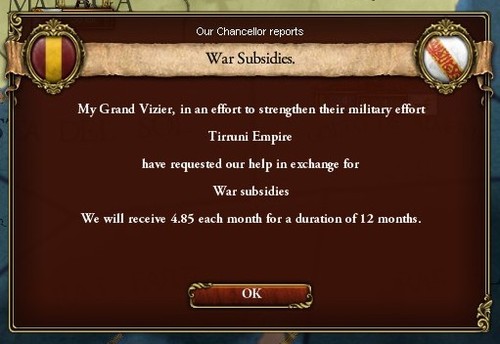
And the situation in Iberia was not looking good. Zulfiqar had held his force back whilst the Berbers rampaged across the peninsula, sacking Maridah before laying siege to Batalyaws, capturing the highly-populated city by mid-April.

El-Baz fell within another week, opening up all of western Iberia to the Berbers, who quickly pushed south and captured several small cities scattered throughout Shilb. It was only now that the Grand Vizier began to move, marching his army to the riverbank of a Wadi-Ana tributary, manoeuvring his force so that the Berbers lay on the other side of the rushing current.
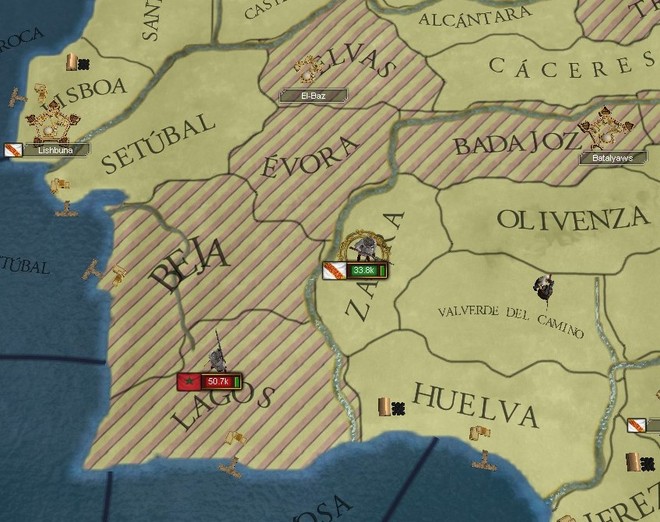
And just as he’d anticipated, the Berber army crossed Wadi-Ana to engage the Andalusi, wading through the rushing water even as artillery began blowing at them. Thousands still managed to make the crossing, only to be met by Zulfiqar’s reinforced army, with the skirmish quickly escalating into fierce fighting between the two foes.
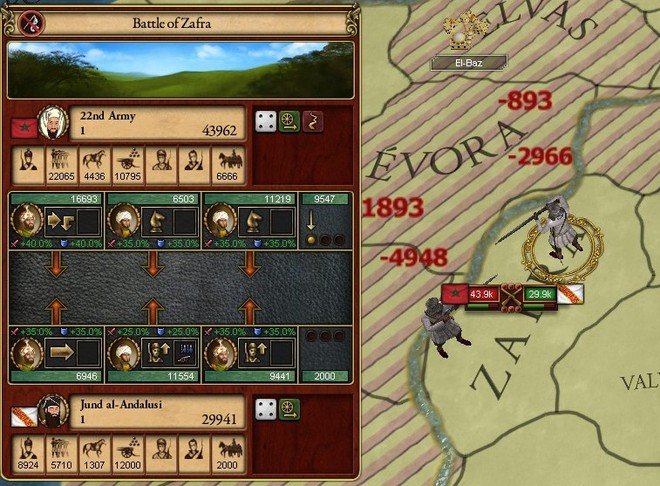
The Andalusi had the upper hand in the early hours of the battle, with thousands of Berbers drowning in the flooded river and thousands more gunned down in hand-to-hand fighting. As more and more of the enemy made the crossing, however, the Andalusi quickly found themselves outnumbered, with the odds quickly turning against them.
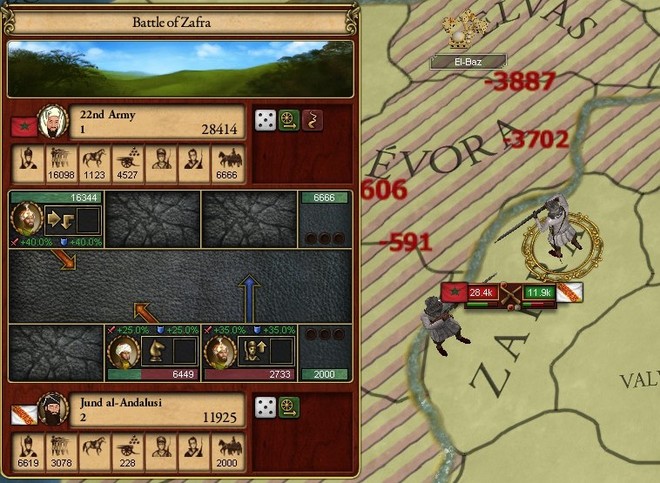
And after an entire day of bloody battle, it was the Andalusi who retreated, having suffered almost 30000 casualties. They’d given as good as they got, however, and the Almoravid offensive was brought to an abrupt halt - for the moment, at the very least.
If Moroccan reinforcements arrived now, however, then the Andalusi were done.
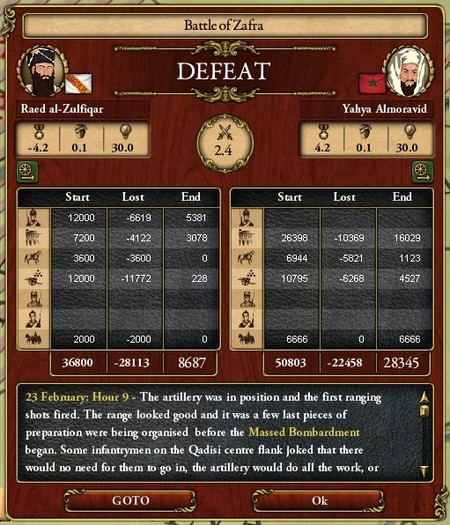
In the Maghreb, Sheikh al-Farihi had already launched an offensive of his own, pushing northwards and laying siege to Tangier. With their resources and attention devoted to the invasion of Iberia, the Almoravids had left al-Farihi to his own devices, and the commander managed to slowly wear down the defenses of the coastal fortress over the course of several long months.
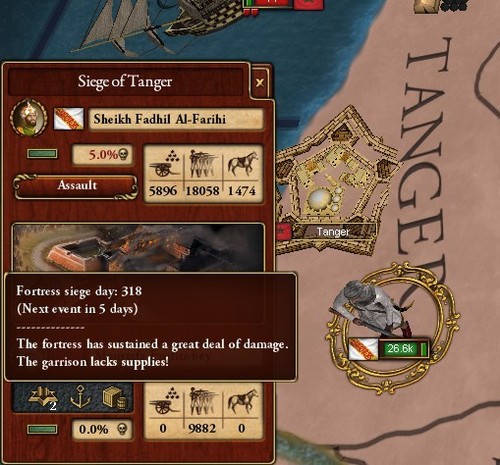
And in September of 1830, his efforts were finally repaid with a small breach in the reinforced walls of Tangier. The breach was quickly forced wider, with thousands of Andalusi cut down as they tried to push through the opening, then past the walls, then into the city, and finally towards the citadel.
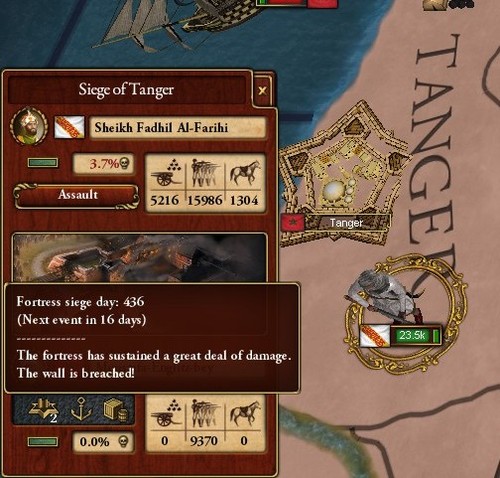
The Berbers forced them to pay for every step in blood, and by the time the governor of Tangier had surrendered to Sheikh al-Farihi, his city was littered with bodies.
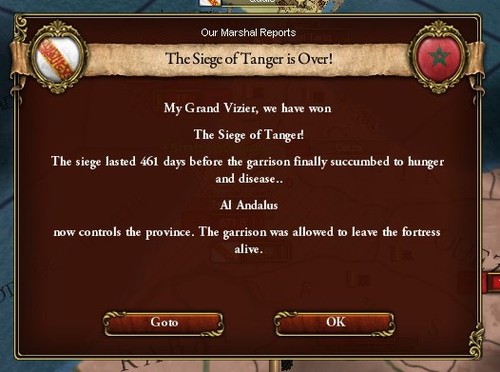
This was a massive victory for the Andalusi, but the commander wasted no time celebrating it, immediately executing any dissidents and installing a loyal garrison in the city. Within days, the restive populace was pacified and al-Farihi felt secure enough to leave, marching on the nearby fortress of Ceuta.
The straits would be Andalusi, no matter the cost.
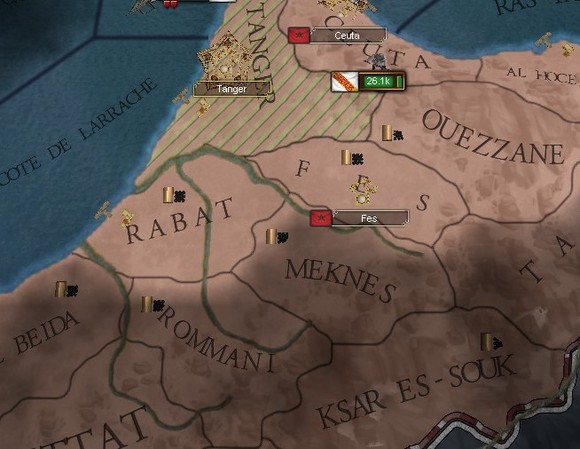
As the new year approached, meanwhile, it brought exciting news with it. In the east, the Smolenskian army had forced their way into Novgorod, dealing a stinging blow to their enemy. Novgorod had now lost everything stretching from Finland to Siberia, and with his Scandinavian territories open to invasion, Tsar Vasiliy was finally forced to negotiating table.
The War of Russian Leadership, at long last, was at an end.
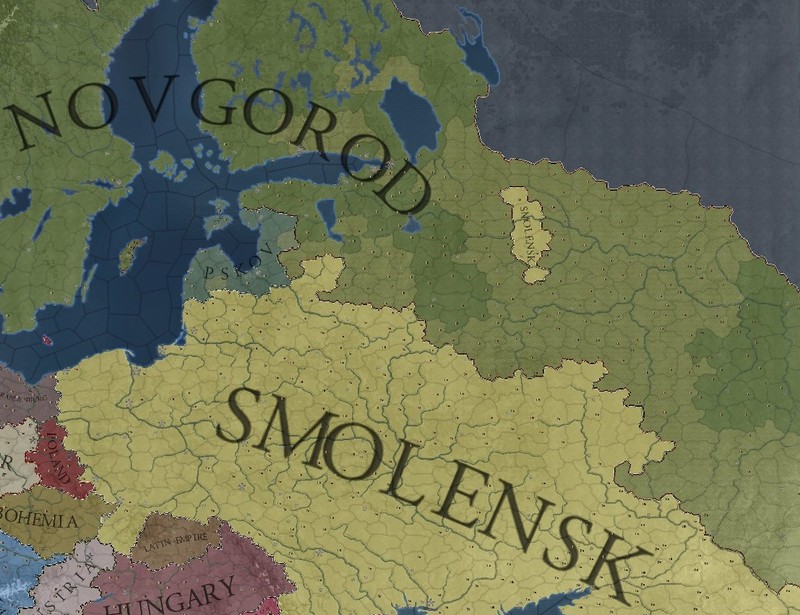
And the price of peace was steep, very steep indeed. Novgorod was forced to cede the vast majority of its Russian territories, with the city of Novgorod itself forming the dividing line between the two empires, though the Tsarina of Smolensk had no interest in the poor, rebellious lands of Siberia.
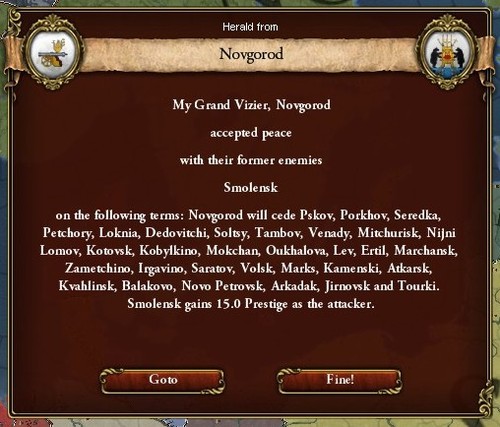
And with that, at long last, it’s over. Ten bloody years of near-constant warfare between the two eastern titans, with unimaginable wealth spent on campaigns, with millions dead or crippled or displaced, with brother fighting brother and sons burying fathers.
But for Dobroslava Rurikid, who entered Novgorod as a conqueror, it was all worth it. She had already dispatched messengers to all the great powers of Europe, and in January of 1831 she was finally crowned Empress of All Russia, though she would gain little recognition as such just then. The next few months would be spent enforcing her rule in Russia, but the new empress had something to prove, and before long her eyes would surely be drawn to the west…
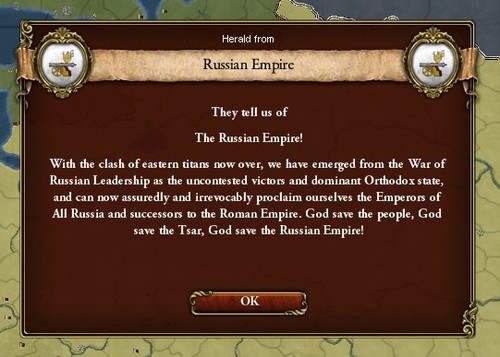
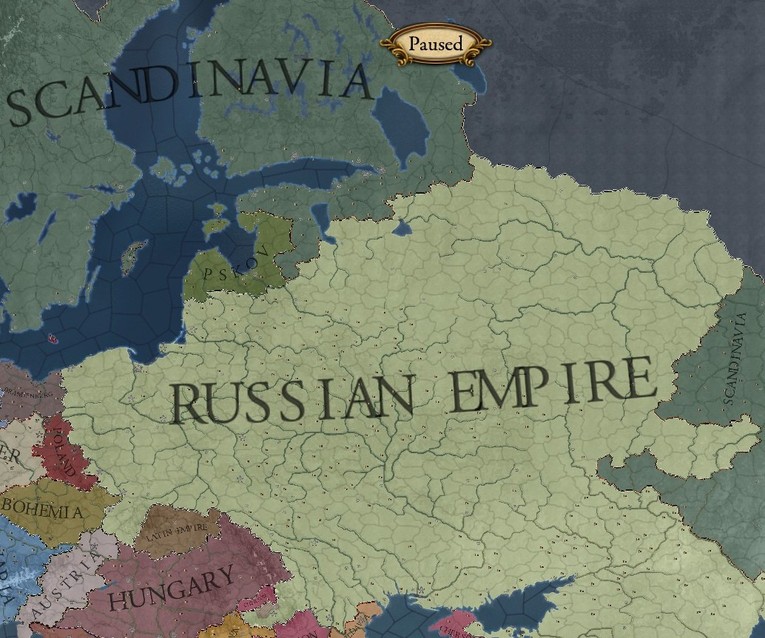
As far as Zulfiqar was concerned, the pretensions of some eastern queen meant nothing at all, not when the enemy was at his doorstep. Early in 1831, the Berber army felt confident enough to go on the offensive again, with the 30000-strong force laying siege to Qurtubah.
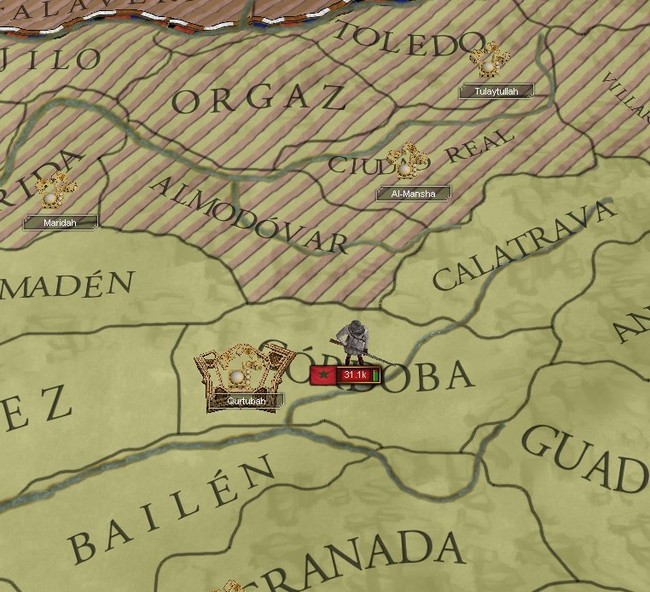
The Andalusi had spent the months following their defeat at Wadi-Ana recruiting and reinforcing the army, desperately trying to build a force capable of matching the Almoravid army. Four months had quickly slipped past, but by April of 1830, Zulfiqar’s force had been expanded to 35000 soldiers.
And with numerical superiority on his side, he finally launched an attack on his own, with a dawn raid on Berber camps quickly escalating into a full-out battle beneath the walls of Qurtubah.
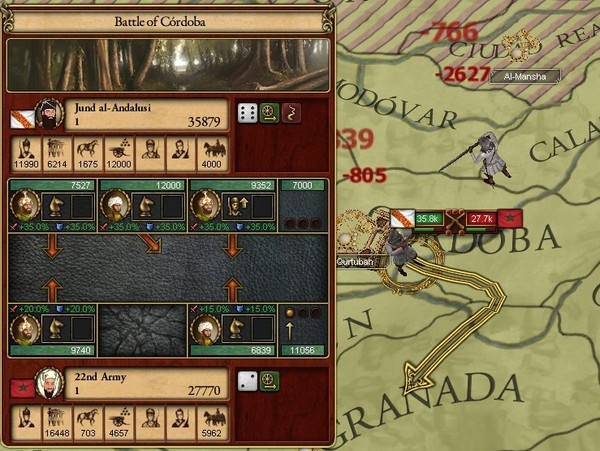
By now, the Berber army had spent over a year in al-Andalus, and was beginning to suffer in morale and supplies. After just two hours of fighting, they were forced back from Qurtubah, with Zulfiqar successfully executing an ingenious double-envelopment manoeuvre and effectively surrounding the enemy force on all sides.
Before day’s end, the Grand Vizier managed to secure his victory, with the Berbers suffering a staggering 30000 casualties. A couple thousand managed to escape the massacre, quickly fleeing to Qartayannat, where Moroccan reinforcements had only just landed.
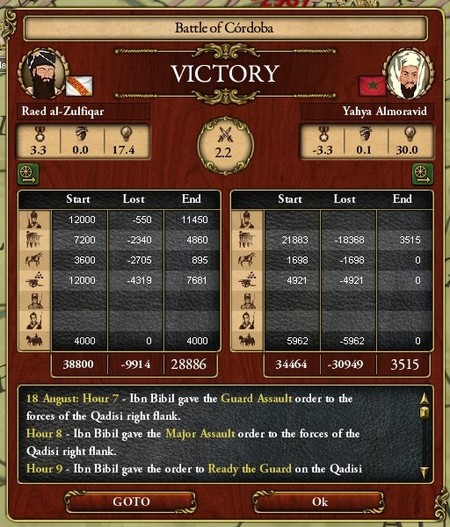
And typically, it was only now that Tirruni came onto the scene, sweeping southwards and recapturing cities and forts. At Zulfiqar’s insistence, the Emperor dispatched several contingents to recapture Andalusi cities in western Iberia, whilst the Grand Vizier led the Andalusi on a forced march towards Qartayannat.
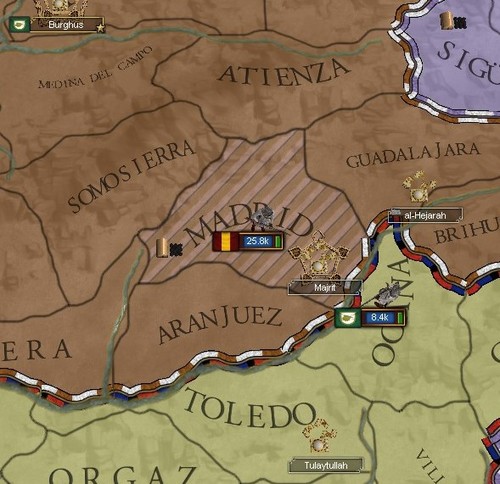

Upon reaching the fortress, however, he discovered that the 42000-strong Berber army had taken refuge within Qartayannat. Zulfiqar immediately laid siege to the fortress, desperate to capture it before the Berbers could launch any sorties, knowing full well that they’d easily overwhelm his own army.
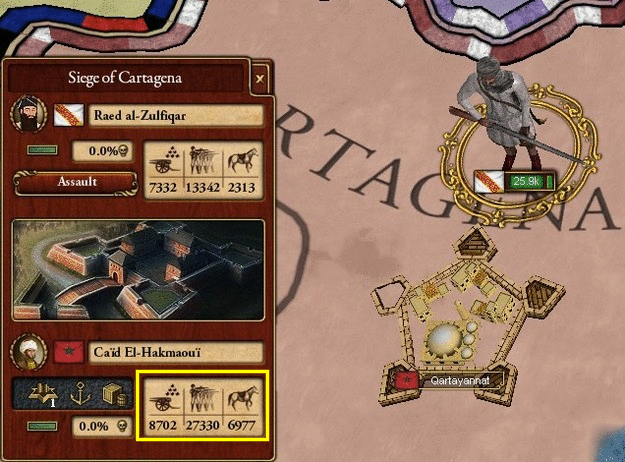
At the same time, further south, the city of Ceuta fell to the Majlisi Guard. It was no easy task, with sheikh al-Farihi eventually forced to launch a massive assault, with thousands of Andalusi soldiers scaling the walls of the fortress. Almost three thousand died in the attempt, but when the sun rose and the dust cleared, an Andalusi flag was fluttering above the city’s highest minarets.
And with that, al-Farihi was certain, everything was about to change.

The Andalusi-Moroccan rivalry stretches back centuries, and throughout all of those years, the Andalusi constantly yearned for control over the straits. Ambitious sultans and emphatic politicians had insisted on foolish invasions of the south, massive armies numbering in the thousands had been sent to their deaths in Africa, entire fleets had been sunk to the depths of the Straits of Gibraltar - but finally, after centuries of scheming and planning and fighting, the Andalusi have finally seized both coastlines.
Not resting on his laurels, Sheikh al-Farihi knew that he had to build on his victory, and strike again before the Almoravids could retaliate. The Majlisi Guard thus launched another offensive within days, pushing south towards Fes, and beyond that Marrakesh itself.
